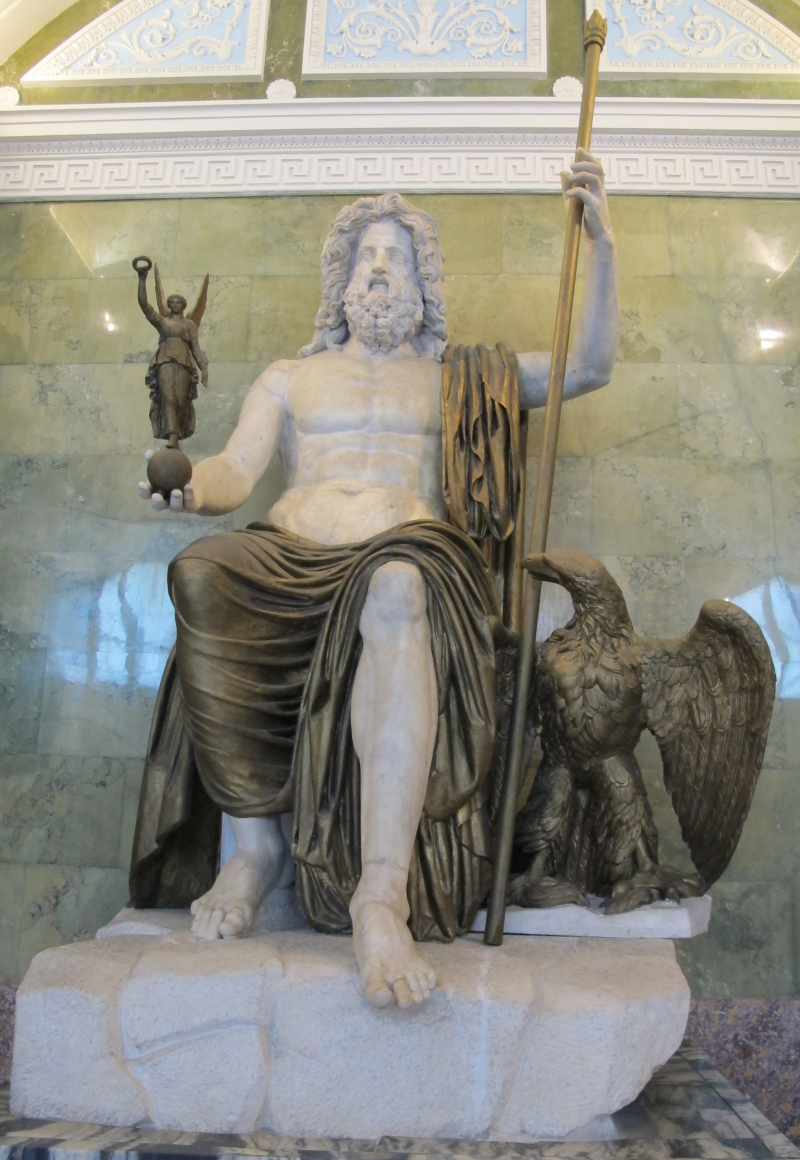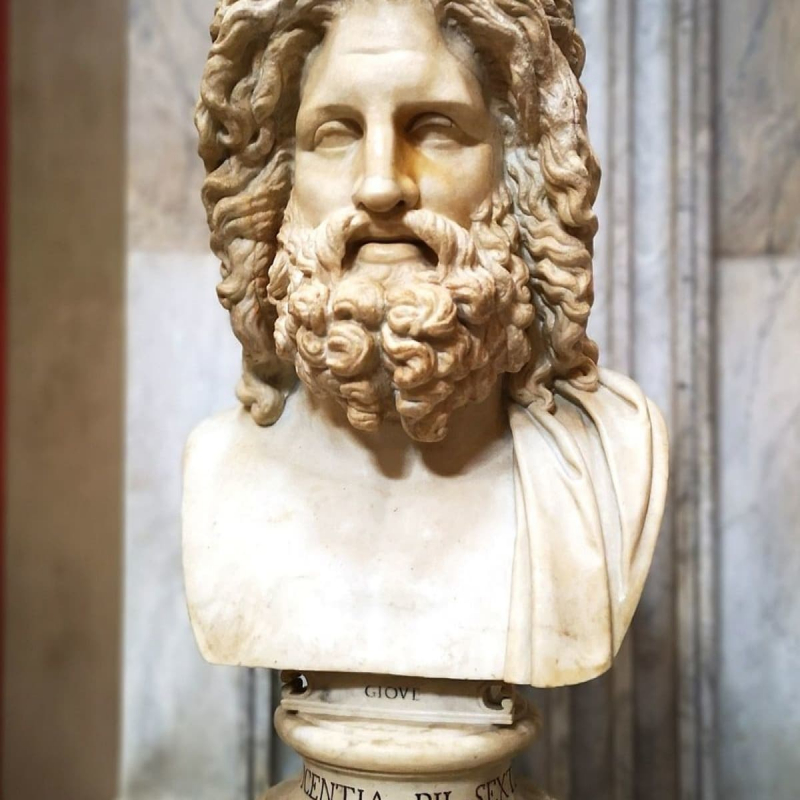Jupiter
One of the most famous Ancient Roman gods is Jupiter. In ancient Roman religion and mythology, Jupiter is the deity of the sky and thunder, as well as the king of the gods. Throughout the Republican and Imperial eras, Jupiter was the principal deity of Roman official religion, until Christianity became the Empire's dominant religion. In Roman mythology, he bargains with Numa Pompilius, Rome's second king, to establish Roman religious ideas such as offering or sacrifice.
Jupiter is commonly regarded to have begun as a sky god. His distinguishing weapon is the thunderbolt, and his major holy animal is the eagle, which took precedence over other birds in the taking of auspices and became one of the most common Roman army insignia. The two emblems were frequently combined to symbolize the god in the shape of an eagle carrying a thunderbolt in its claws, as seen on Greek and Roman coins. He was a divine witness to oaths, the sacred trust on which justice and good government rely. Many of his activities were centered on Capitoline Hill, which housed the citadel. With Juno and Minerva, he was the principal guardian of the state in the Capitoline Triad. The oak was his sacred tree.
The Romans considered Jupiter as the equivalent of the Greek Zeus, and the stories and iconography of Zeus are adopted under the name Iuppiter in Latin literature and Roman art. Jupiter was the Greek-influenced brother of Neptune and Pluto, the Roman equivalents of Poseidon and Hades, respectively. Each ruled over one of the universe's three realms: the sky, the waters, and the underworld. The Italic Diespiter was a sky god who showed himself in daylight and was commonly associated with Jupiter. Tinia is considered his Etruscan counterpart.












